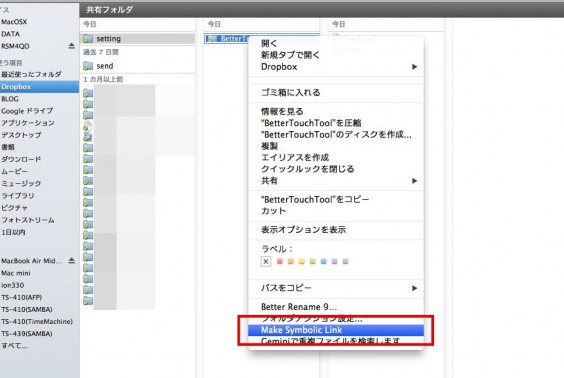

- Symboliclinker for mac mac os#
- Symboliclinker for mac install#
- Symboliclinker for mac software#
- Symboliclinker for mac download#
Main limitation is it holds a hard coded path. One is like a Microsoft Windows shortcut/alias. This is a Unix thing, too 'advanced' even for my O'Reilly OS X Unix book! Symboliclinker Downloadīut the documentation mentioned 'symlinks'. Losing the innate indirection design of Mac Classic is quite sad. The original Mac didn't have these problems - but OS X is more like Windows.
Symboliclinker for mac mac os#
and all previous releases of Mac OS X, aliases to folders would retain the custom icon, regardless of the name. The Symbolic Linker helps to create symlinks on Mac. Add its 'rvice' to your librarys Service folder (in the finders Go menu with the Option key held down to find the library link) and restart. Every Mac user who uses multiple devices knows the problem: How can any data and folders be kept in.
Symboliclinker for mac install#
So I try the install - and discover it wants to install on my boot disk! Sigh. A free 'Service' file called SymbolicLinker. Tons of utilities, documentation, AppleScript studio - you name it. This OS X add-onwhich is provided as a services plug-in for OS X 10.
Symboliclinker for mac download#
Now that I had my big external drive, the next step was to download and install the OS X development tools. A simpler alternative is the free SymbolicLinker. SymbolicLinker does this by adding a contextual menu item to the Finder that generates symbolic links to the selected files.
Symboliclinker for mac software#
SymbolicLinker is a tiny contextual menu plugin (for OS X 10.3.9 through 10.5.8) and software service (for OS X 10.6 or later) that, once installed, allows any user to create symbolic links to files inside the Finder. It does this by adding a contextual-menu item to the Finder that generates symbolic links to the selected files. SymbolicLinker is a tiny service that, once installed, allows any user to create symbolic links to files inside the Finder. Copy the file from the package, hold down the Option key, click on the Go menu in the Finder, select Library, open the Services folder, and paste the file you copied. When you now click on the ‘Documents’ category in Lightbox’ top row, ZBrush links to and can see your assets perfectly.Head over to the SymbolicLinker page on GitHub and download and open the package on your Mac. Next you’ll need to delete the original ZDocs folder that resides inside ~/Applications/ZBrushOSX\ 4R5/ (as of ZBrush 4R5) and move your new symbolic link ‘ZDocs’ folder in it’s place. Once you’ve done that, create a symbolic link of the root/master folder of your Asset library and rename the symbolic link to “ZDocs”. It’s best to have all your assets (Textures, ZTools, Alphas, etc) already neatly organized in a proper, consistent folder hierarchy. But you could of course use any of the others, provided that you have no problem with replacing the default ZBrush assets that reside in those folders. The trick (and catch) to this is you have to replace the directory of one of the default areas that Lightbox has with your symbolic link. So RMB-click on the folder you want to create a symbolic link out of and from the Contextual menu that pops up, select ‘Make Symbolic Link’ If your Mac complains that it cannot open SymbolicLinker as its from an. As a service, it will be accessible from the RMB-click menu in the Finder. While symbolic links share many similarities with macOS better known alias.
Simply double click this file to install it. It comes in a ‘.dmg’ file that contains a ‘rvice’ file. You can use a pre-made OSX Service for this called ‘SymbolicLinker’, which can be downloaded from here: Instead, you need to make an actual Unix ‘Symbolic Link’ Here it is:Ĭonfiguring ZBrush’s Lightbox to use your own Asset libraryĭon’t use OSX’s ‘.alias’ feature.

I managed to get it to work in the end, but it was a bit of a struggle to get there, so I decided to write the procedure (for OSX) down for future use. I looked into something like this a while ago, when I wanted to link my personal ZBrush assets folders to Lightbox.


 0 kommentar(er)
0 kommentar(er)
